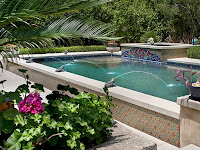Tri-Chlor Shortage and Using Liquid Chlorine Instead
I asked Industry expert Harold Evans his thoughts on the Tri-Chlor shortage, and in his opinion, this can bring positive change to the industry. He believes the overreliance on Tri-Chlor was ultimately bad for the industry and he offers some ways to get through the current shortage.
Other Podcasts in this series:
Why the LSI is Key with Harold Evans of Orenda Technologies: https://www.buzzsprout.com/110832/8514020
Salt Water Generators and Those White Flakes with Harold Evans of Orenda Technologies:
The Orenda Way with Harold Evans of Orenda Technologies:
About Orenda Technologies:
Harold Evans is the CEO of Orenda Technologies and has run a pool service company, “the Pool Surgeon” since 1983. For many years, Orenda was primarily a specialty chemical manufacturer, building a business on quality, professional-grade products, and reputation. We have since evolved into an education company. We have invested heavily in building the pool industry's leading mobile app and dosing calculator, have a library of helpful videos, and a growing list of educational articles in our blog. In 2019 we released Orenda Academy, which is another free resource for anyone to learn more about pool management.
Here is more about Tri-Chlor tablets themselves:
Tri-Chlor or Trichloroisocyanuric Acid comes in three forms. The familiar 3” tablets that slowly dissolve in your pool, a very fine powder shock and a granular form. About 50% of the Tri-Chlor by weight is Conditioner (Cyanuric Acid). So, a 50 lbs. bucket of tablets is about 25 lbs. of Conditioner. If you overuse tablets your pool’s CYA level can go up rapidly. Trichlor tablets are usually 90% to 99% active chlorine. Tri-Chlor tablets have a very low pH of 2-3 so they will lower the pH in your pool. The tablets contain acid in the form of Cyanuric Acid so if one falls into the pool it is likely to stain the surface by burning it.
Tri-Chlor granular is very powerful stuff. It is basically the Tri-Chlor Tablet grounded up in granular form and is 99% active chlorine. Use with extreme caution as the Conditioner in the granular can stain the plaster. The CYA in the tablet is basically acid and if you let it pile up on the pool surface it will stain the plaster as if you dropped a 3” Tablet into the pool. Never add this to the skimmer and if you do use it for Black or Mustard algae make sure it is evenly dispersed on the pool surface. Not for use in Vinyl, Fiberglass, or color plaster pools.
Pros:
A very strong form of chlorine
Slow dissolving in tablet form so it releases chlorine all week long
Easy to use and affordable
Keeps a good residual chlorine level in your pool all week
Very long shelf life
Cons:
Can stain the pool surface
Contains 50% CYA by weight
Be careful of toxic fumes
So what are some options with the shortage of tablets and the price increases in the current market? I think moving over to liquid chlorine would not be a bad idea. You may need to drain your pool partially to lower the CYA level down to make the liquid chlorine more effective but in the end, switching to liquid chlorine or bleach would be your best alternative. It is readily available, highly effective, and priced less than tablets at the moment.
About Liquid Chlorine:
Liquid Chlorine or Bleach is the tried and true standard chemical of choice for most pool service professionals. It is easy to use and relatively inexpensive and it has the least side effects of any of the chlorine you can choose from. It is usually sold in 12.5% active chlorine per gallon with Bleach coming in at about half that strength at 6.5%. It will raise the pH slightly, but it does not contain any Stabilizer or Conditioner making it ideal for all pool types. This means that when you add a gallon of liquid chlorine and your Conditioner level (CYA) is 50 ppm it will stay at 50 ppm even if you add 20 gallons of liquid chlorine.
Pros:
Fastest acting of all chlorine types
Will not raise your CYA level
Safe for all pool types
Easy to use
Cons:
Breaks down by the Sun’s UV Rays so your pool needs a CYA level of 30-50 ppm
Short shelf life so rotate stock or buy fresh chlorine when needed
The gallons can be heavy compared to a bag of shock
Is seen as weaker than shock based on the low percentage of chlorine but is stronger
Visit my Website: http://www.swimmingpoollearning.com/
YouTube Video Index: http://poolmandave.blogspot.com/2014/03/swimming-pool-tips-reviews-how-to-video.html – A list of all of my videos.

Comments
Post a Comment